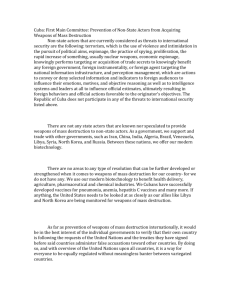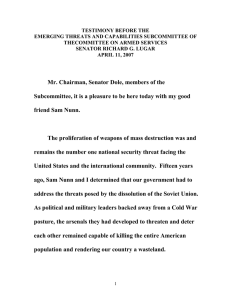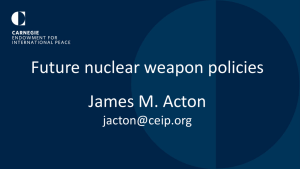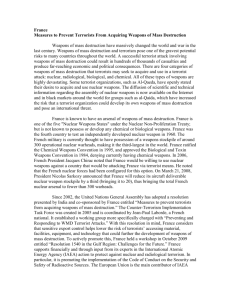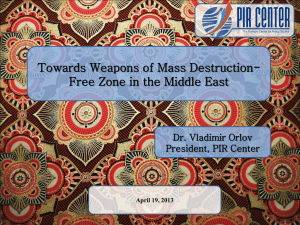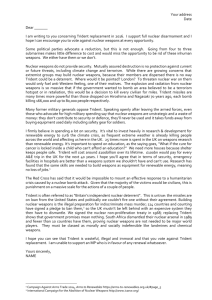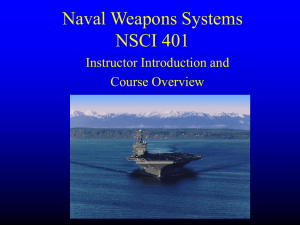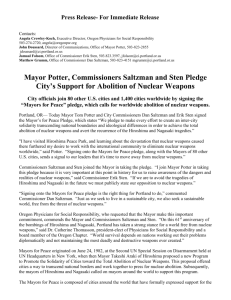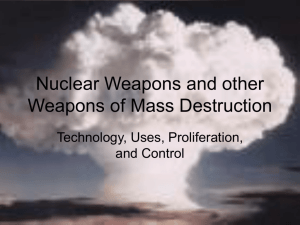Weapons of Mass Destruction
advertisement
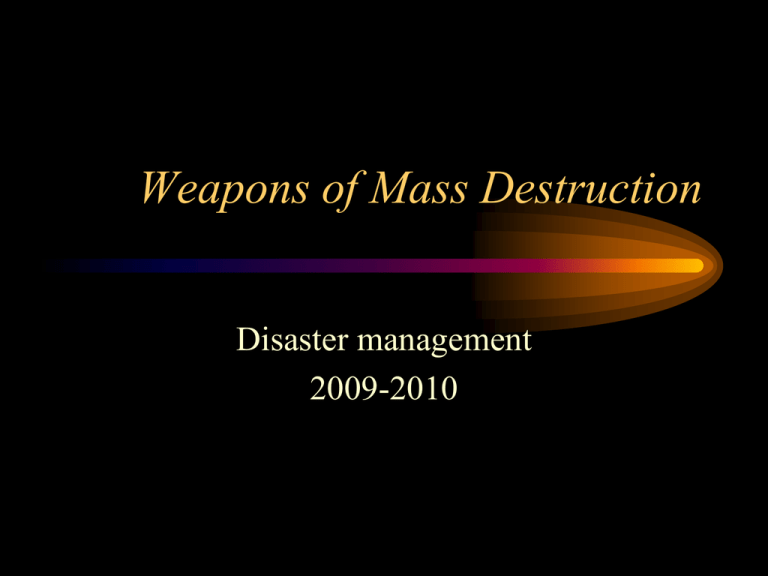
Weapons of Mass Destruction Disaster management 2009-2010 Objectives • • • • • • Definition Definition Types of Rockets & Missiles Symbols Weapons of Mass Destruction Nuclear Weapon Effects Objectives continued • Hiroshima and Nagasaki • Russian bomb now the strongest one • Earthquake Weapons of Mass Destruction Definition 1. A weapon that can kill large numbers of humans 2. cause great damage to man-made structures, natural structures, or the biosphere in general. 3. The scope and application of the term has evolved and been disputed, often signifying more politically than technically. 4. Coined in reference to aerial bombing with chemical explosives, it has come to distinguish large-scale weaponry of other technologies, such as chemical, biological, radiological, or nuclear. The term Weapons of Mass Destruction (WMD) refers to weapons that have the capacity to kill indiscriminately on a large scale and have enormous destructive capability. Broadly there are three main types of WMDs: nuclear weapons, biological weapons, and chemical weapons. These weapons, if used, have the ability to annihilate whole cities and wipe out entire populations. Non-military targets are not exempt from the horrors of these weapons. The most vulnerable sectors of a population, i.e. civilians and non-combatents , are always the most affected by WMD attacks. This can be seen in the dropping of nuclear bombs in Hiroshima and Nagasaki in 1945. Types of Rockets & Missiles Guided Cruise Rocket Missile • • AAguided cruise rocket missile is a powered deliverythat guided missile vehicle use against flies atfor a moderate ground targets. A large speed and at low portion offollowing its flight isthe altitude, interrain a ballistic trajectory. beneath it. The It’s the optimum Tomahawk is a cruise delivery missile system for WMD. Symbols Unicode Image ☠ U+2620 Radioactive symbol ☢ U+2622 Biohazard symbol ☣ U+2623 N/A N/A Toxic symbol Chemical warfare symbol Symbol Weapons of Mass Destruction Nuclear Chemical Radiological Biological High Explosives Nuclear Weapon Effects The dominant effects of a nuclear weapon where people are likely to be affected (blast and thermal radiation) are identical physical damage mechanisms to conventional explosives. However the energy produced by a nuclear explosive is millions of times more powerful per gram and the temperatures reached are briefly in the tens of millions of degrees. An American nuclear test Hiroshima and Nagasaki During the final stages of World War II in 1945, the United States conducted two atomic bombings against Japan in the cities of Hiroshima and Nagasaki. Watch the video Russian bomb now the strongest one Earthquake The pressure wave from an underground explosion will propagate through the ground and cause a minor earthquake . Theory suggests that a nuclear explosion could trigger fault rupture and cause a major quake at distances within a few tens of kilometres from the shot point. Destruction is easy but construction is hard By – Yash Malpani, Shubham Rathi, Amit Bhangre, Ojas Bangla


